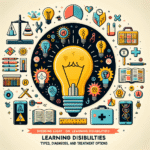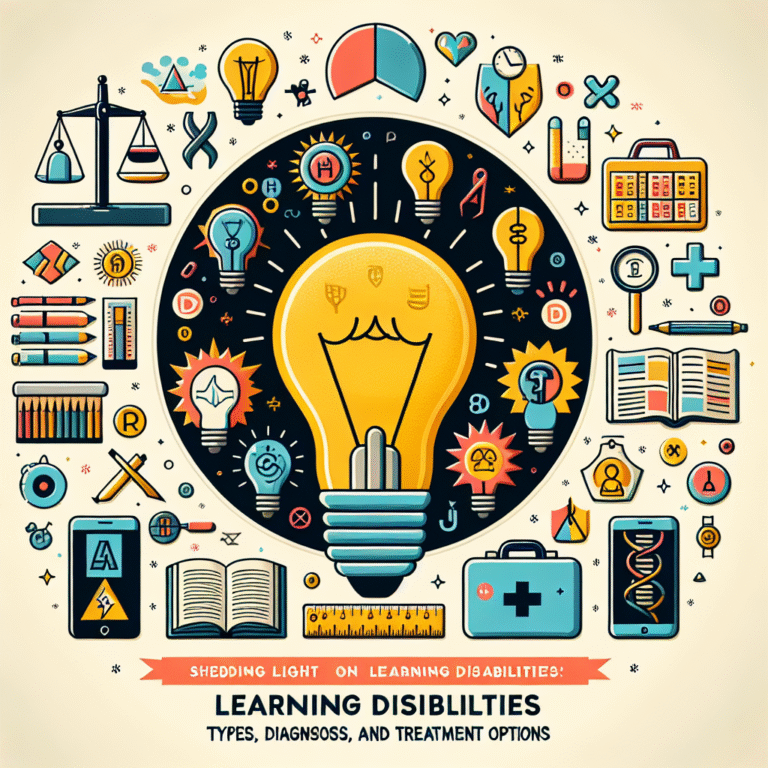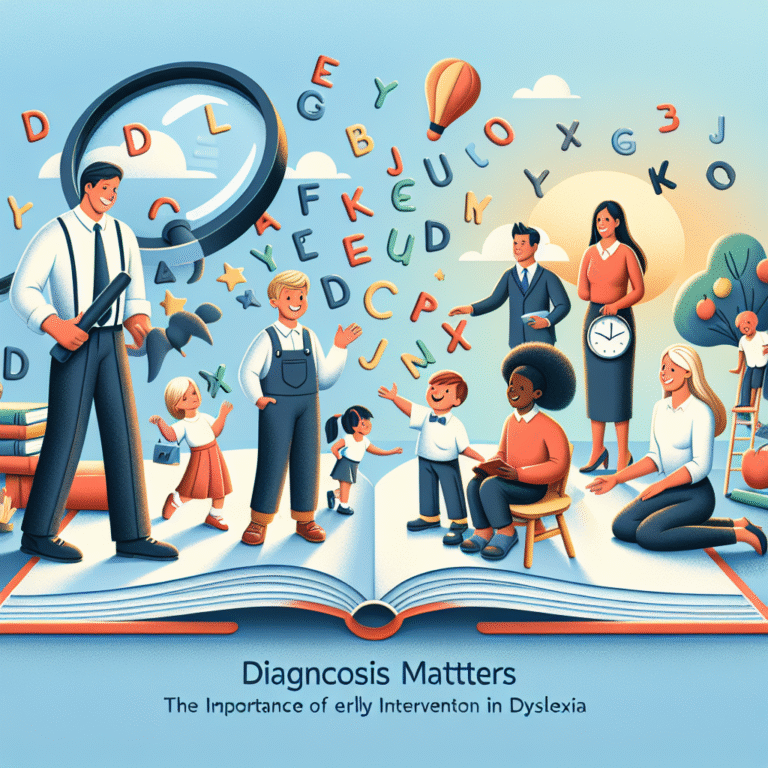Empowering Minds: The Essential Role of Assistive Technology in Learning Disabilities
Introduction
In a world that is rapidly evolving in terms of technology and learning strategies, one thing remains clear: education is not one-size-fits-all. For millions of people, learning disabilities pose significant barriers to obtaining a quality education. However, empower minds by leveraging innovative tools that break down these obstacles—assistive technology (AT). Whether it’s through text-to-speech applications or apps that enhance executive functioning skills, assistive technology plays a critical role in transforming educational experiences for individuals with learning disabilities.
This article delves deeply into "Empowering Minds: The Role of Assistive Technology in Learning Disabilities," exploring how these tools not only aid learning but inspire confidence and independence. From case studies showcasing different success stories to actionable insights for implementing AT in educational environments, this piece aims to provide a comprehensive guide on how technology can truly empower minds.
Understanding Learning Disabilities
What Are Learning Disabilities?
Learning disabilities (LD) are neurodevelopmental disorders that affect an individual’s ability to receive, process, or communicate information. The most common types include:
- Dyslexia: Difficulty with reading and language processing.
- Dyscalculia: Challenges in understanding numbers and mathematical concepts.
- Dysgraphia: Difficulty with writing and fine motor skills.
- ADHD (Attention-Deficit/Hyperactivity Disorder): Issues with concentration, impulsivity, and organizational skills.
According to the U.S. Department of Education, approximately 1 in 5 students has some form of learning disability—making it a prevalent concern in educational settings.
The Impact of Learning Disabilities
Imagine a bright student who struggles to articulate their thoughts in written form, or a math whiz who feels defeated because numbers just don’t make sense. Learning disabilities can not only hinder academic performance but also lead to self-esteem issues and behavioral problems. This is where assistive technology comes into play, offering a lifeline to students who may otherwise fall behind.
The Power of Assistive Technology
What is Assistive Technology?
Assistive technology refers to any device, software, or equipment that helps people perform tasks that might otherwise be difficult or impossible. This includes everything from simple tools like colored overlays for reading to sophisticated software that can dictate, read aloud, and even organize information.
Examples of Assistive Technology:
- Text-to-Speech Software: Programs that convert written text into audio.
- Graphic Organizers: Tools that help visualize concepts and relationships.
- Speech-to-Text Software: Technology that converts spoken words into written text.
- Reading Pens: Handheld devices that scan text and read it aloud.
- Learning Management Systems (LMS): Platforms that provide customized learning environments.
Case Study: The Wonder of Text-to-Speech Technology
Consider the case of Sarah, a high school student diagnosed with dyslexia. For years, Sarah struggled with reading assignments and examinations. Her grades suffered, and her confidence plummeted. Enter text-to-speech technology, which allowed Sarah to listen to her textbooks and assignments as she followed along with the printed text.
Analysis:
- Outcome: Within a semester, Sarah not only improved her grades but also gained a newfound enthusiasm for learning. The technology empowered her to engage with materials she once found daunting, making education more accessible and enjoyable.
Assistive Technology in the Classroom: Steps for Implementation
For educators and institutions, the challenge lies in effectively integrating assistive technology into existing curricula. Here’s a practical guide:
- Identify Needs: Assess each student’s individual requirements to determine which forms of assistive technology would be beneficial.
- Select Appropriate Tools: Choose technology based on accessibility, usability, and learning goals.
- Train Teachers and Staff: Provide adequate training to ensure staff can assist students in using these tools effectively.
- Monitor Progress: Regularly assess the effectiveness of the technology and adapt as necessary.
- Communicate with Parents: Keep open lines of communication between schools and families to ensure students receive the support they need.
The Research Landscape: Statistical Evidence
Research shows that students using assistive technology improve their academic performance significantly. Below is a summarized table of findings from various studies focusing on the effectiveness of AT:
| Study | Findings |
|---|---|
| National Center for Learning Disabilities | 70% of students with learning disabilities showed improvement in writing skills when using graphic organizers. |
| Journal of Special Education Technology | 85% of participants benefitted from text-to-speech technology, showing higher engagement levels in reading activities. |
| Education Technology Research | Students with dyscalculia who used math software saw a 50% increase in math proficiency compared to traditional methods. |
Common Misconceptions About Assistive Technology
Despite its benefits, there are numerous misconceptions surrounding assistive technology. Let’s clarify some of these:
- "AT is only for students with severe disabilities." In reality, assistive technology can benefit any student struggling with learning challenges.
- "Using AT will make students reliant on technology." Actually, AT fosters independence by equipping students with the tools they need to learn efficiently.
- "Assistive technology is too expensive." Many free or low-cost options are available, making AT accessible for schools and families.
Implementing AT at Home
Empowering Minds: The Role of Assistive Technology Beyond the Classroom
It’s crucial to extend the use of assistive technology beyond the school environment. Here are actionable ways parents can incorporate AT at home:
- Set Up a Learning Space: Create a designated, distraction-free area for studying that is equipped with the necessary technology.
- Foster a Positive Technology Experience: Encourage kids to explore different tools without fear of failure—learning should be a fun experience!
- Track Progress Together: Regularly check in with your child to see how they feel about the tools they’re using, adjusting as needed.
Case Study: Empowering at Home
Take the example of Michael, a 10-year-old diagnosed with ADHD. His parents used a combination of a digital planner and a reward-based app to help him stay organized and focused.
Analysis:
- Outcome: Michael’s anxiety about completing homework decreased, and he began to manage his study time effectively. This empowerment not only improved his grades but also helped him build essential life skills.
The Future of Assistive Technology
Innovations on the Horizon
The world of assistive technology is continuously evolving. Here are some promising advancements to watch for:
- Augmented Reality (AR): Tools that help students visualize concepts in three-dimensional formats, enhancing understanding.
- Artificial Intelligence (AI): Adaptable learning programs that can assess a student’s abilities and tailor the material accordingly.
- Wearable Technology: Devices that can assist students with focus, organization, and memory—think smartwatches that offer reminders for tasks.
Importance of Inclusivity in Tech Development
As technology continues to advance, it’s critical for developers to involve educators, parents, and students in the design process to ensure that emerging tools are genuinely beneficial for those with learning disabilities.
Conclusion
The journey toward educational equality for students with learning disabilities is complex, but assistive technology serves as an essential ally. "Empowering Minds: The Role of Assistive Technology in Learning Disabilities" illustrates how these resources can transform not just academic outcomes, but the self-perception and confidence of learners. As we look toward the future, it’s imperative that educators, parents, and developers collaborate to ensure that every learner, regardless of their challenges, can unlock their potential.
Actionable Insights:
- Explore Local Resources: Identify what assistive technologies are available in your area.
- Engage in Dialogue: Talk openly with educators about potential benefits and strategies for your child.
- Stay Informed: Keep abreast of new technologies, as the landscape is constantly changing.
FAQs
1. What is assistive technology?
Assistive technology includes tools and devices designed to help individuals with disabilities perform tasks they may find challenging.
2. How can assistive technology benefit my child with a learning disability?
AT can enhance learning experiences, promote independence, and improve academic outcomes, ultimately boosting self-confidence.
3. Is assistive technology affordable?
Many assistive technology options are free or low-cost, particularly software applications. Education institutions may also provide access to necessary tools.
4. Can assistive technology be used in any learning environment?
Yes, assistive technology can be adapted for use in various settings, including homes, classrooms, and even online learning platforms.
5. How do I know which assistive technology is right for my child?
Assess your child’s unique needs, consult with educators, and explore different tools to see which one best supports their learning process.
By understanding and leveraging the power of assistive technology, we can truly empower minds and create an inclusive educational environment for all learners, enabling them to thrive and achieve their dreams.









